The colorful, patterned tile called azulejo that adorns the facades of buildings across Lisbon has, like cod, port wine, and all things nautical, become a cultural signifier of Portugueseness—a marker of local authenticity so significant as to be the subject of an entire museum, the Museu Nacional do Azulejo, and the prime offering in countless souvenir shops. But, like those other signifiers, azulejo is a cultural hybrid, the product not of local isolation but of global interconnection. It reached Portugal from North Africa via Spain; it subsequently evolved under Chinese and Dutch influence; and, during the colonial era, it made its way as far afield as Brazil, India, and lusophone Africa.
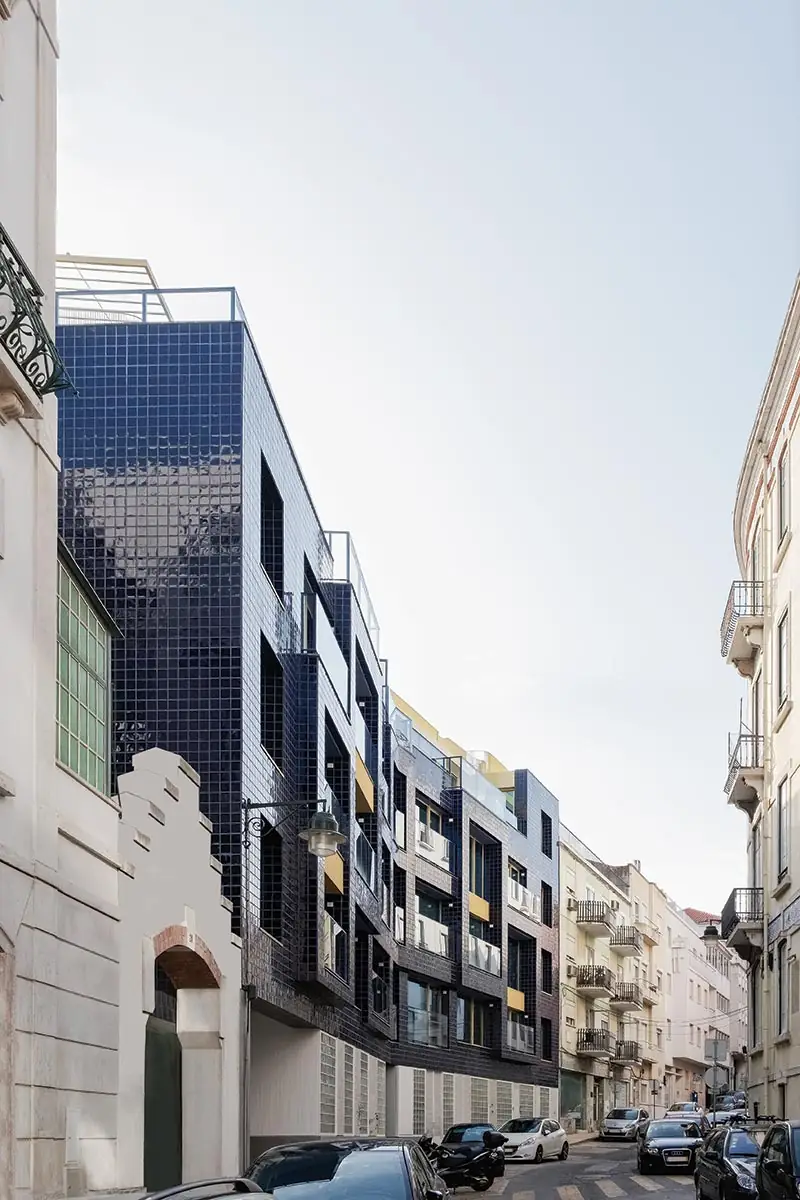
Vale Pereiro stands at a kink in the street. Photo © Adriano Mura, click to enlarge.
It seems only fitting, then, that the tile-covered Vale Pereiro apartments, located not far from the Avenida da Liberdade in central Lisbon, were designed some 900 miles away in Geneva by the firm Nomos, which has additional offices in Lisbon and Madrid. Here the tiling is hardly traditional—it consists of 5½-inch squares hand-glazed locally in a deep cobalt blue and placed in a uniform grid—but nonetheless the association with its historical counterparts is apparent, especially since the building it faces across the narrow Rua Vale do Pereiro is adorned with the more typical blue-and-white azulejos. Both the street and the facade of Vale Pereiro are kinked, and so the new tiling, when seen from a distance and in the oblique, becomes a shimmering focal point—a gesture toward Portuguese identity, elevated, by its location, into an urban marker.
Before it was the Vale Pereiro, and before its facade was enameled in blue, this building was a drab 40-year-old block of offices fronted with glass and painted concrete. After acquiring the structure along with a permit to demolish and replace it with a residential building in 2016, the developer, Capvest, brought in Nomos to study alternative possibilities. For several reasons, sustainability benefits not least among them, the architects preferred retaining the existing structure. “We tried to keep the building’s soul,” says Katrien Vertenten, the Nomos partner in charge of the project, noting that its siting was effective and its concrete structure sound.
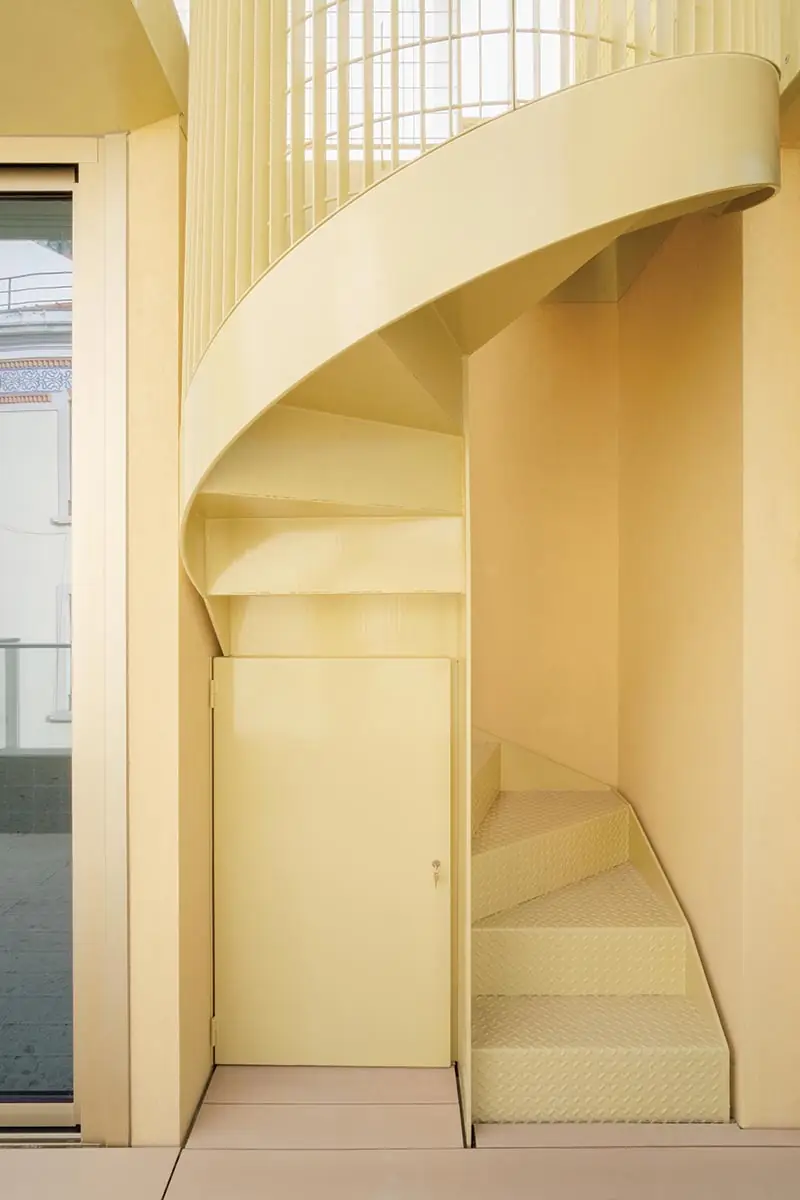
1
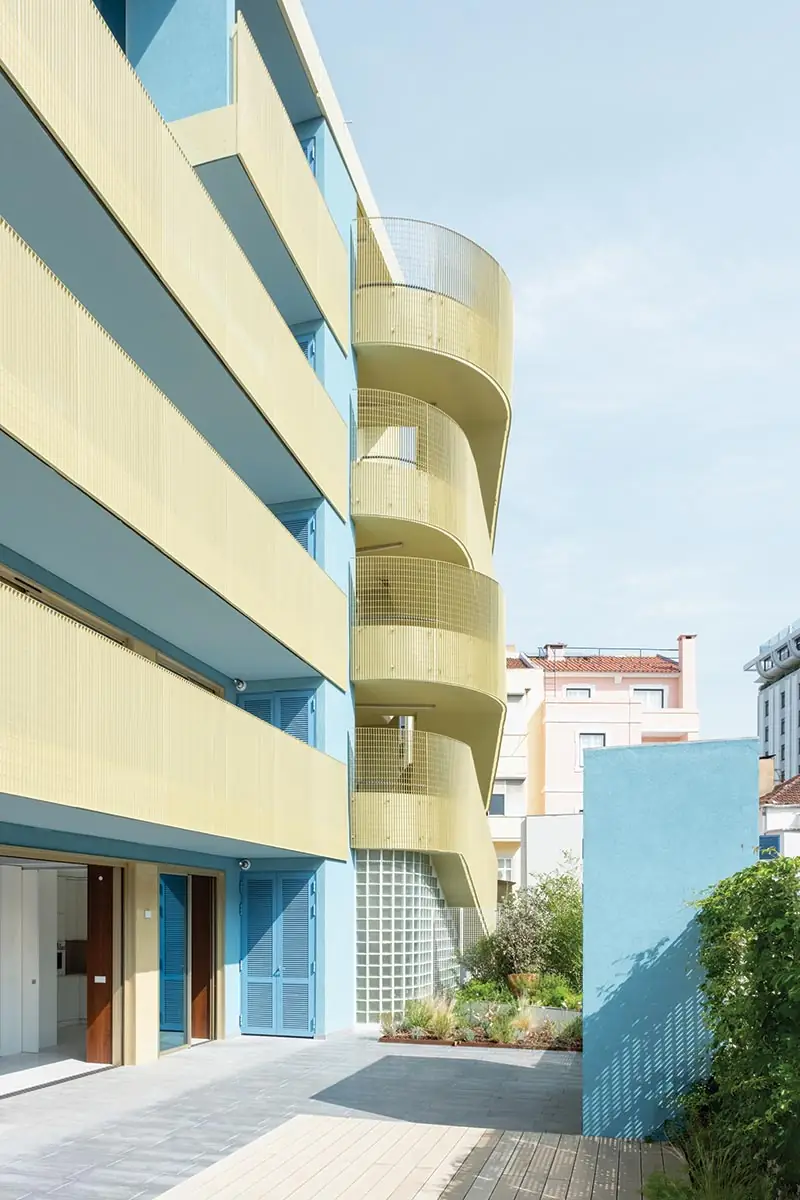
2
A new stair at the rear, and smaller stairs leading to two roof decks, add playful notes to the design (1 & 2). Photos © Adriano Mura
Nonetheless, converting the five-story structure into 13 for-sale apartments of varying sizes was no easy undertaking. Its low ceiling heights presented a particularly difficult obstacle—Capvest aimed to create spacious, luxurious apartments that could command premium prices—and one that became the basis for one of Nomos’s most radical interventions: cutting into the slabs to create double-height spaces in many of the units. As a result, the 39,000-square-foot building is in section something of a Tetris screen, the various apartments forming vertically interlocking room arrangements. The aesthetic interest of these moves then also becomes the basis of the composition of the facade, where tiled bump-outs mark the double-height spaces in each unit, and existing yellow-painted beams indicate where the slabs have been cut directly behind them.
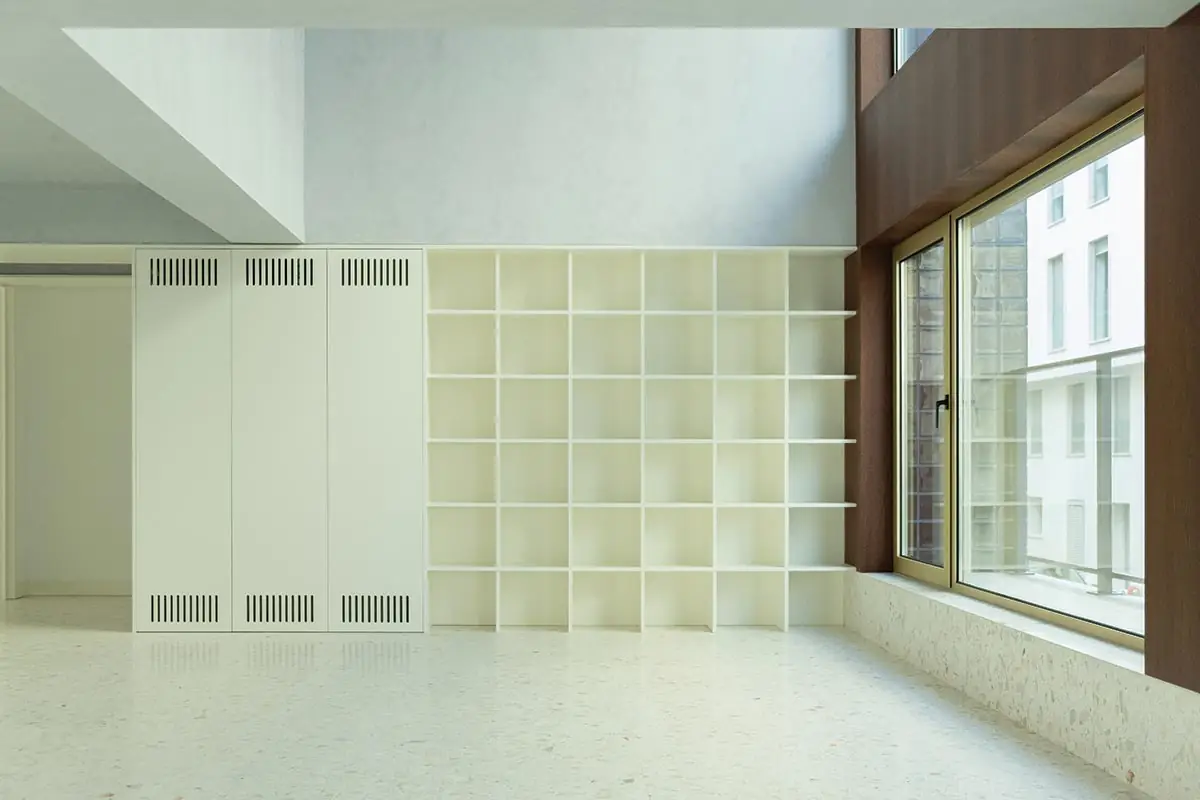
Double-height spaces (above) are expressed on the facade as bump-outs (top of page). Photo © Adriano Mura
Vertenten and her colleagues moved the building’s entrance from one side to its center, where they inserted a small common area and elevator lobby. Because the remainder of the ground floor now houses two apartments, the architects created a set of buffer spaces shielded by gridded trellises and glass block along the remainder of the street frontage. These “winter gardens,” as Vertenten refers to them, provide the occupants of the units with a measure of privacy while still allowing for cross ventilation.
Throughout the interiors, the sharp contrast between the low-ceilinged and double-height rooms imbues the units with the spatial drama of compression and release; each type of space becomes more interesting in relation to the other. The interior finishes—terrazzo floors, painted cabinetry, dark wood paneling, and, especially, textured paint on all surfaces above the lowest overhead beams—serve to highlight the building’s distinct spatial qualities while providing an understated backdrop for the lives of its occupants.
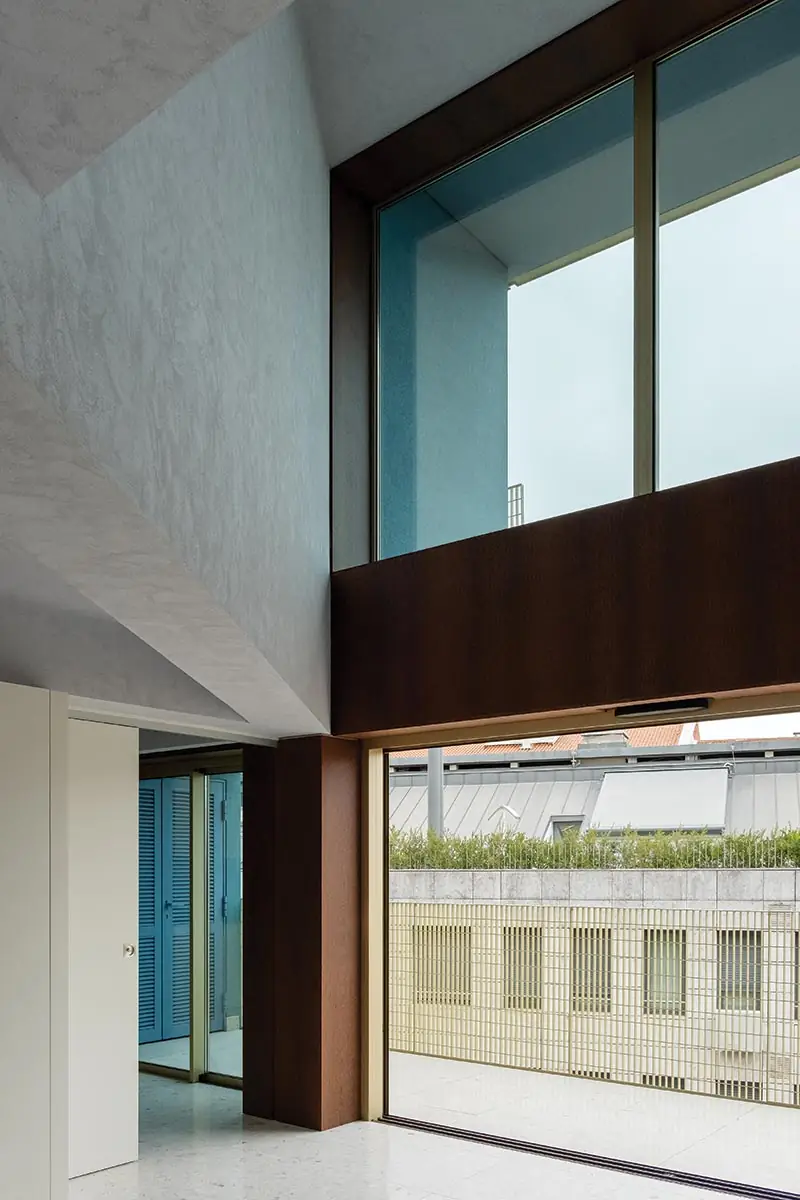
3
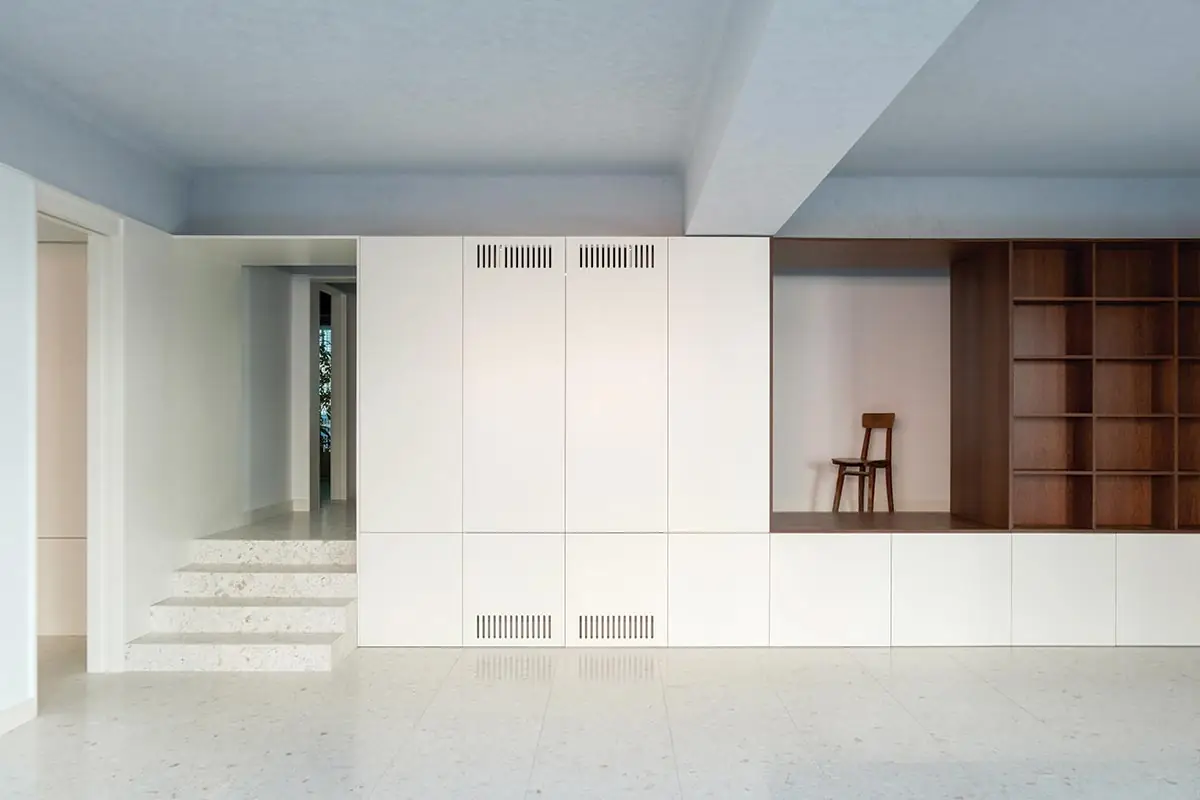
4
Interior finishes are sleek (3 & 4). Photos © Adriano Mura
There is lightheartedness here too, primarily on the rear elevation, which is rendered in a sky blue with balustrades on each floor and a sculptural outdoor stair—all added in the renovation—painted a cheery yellow. This elevation serves as an informal, private counterpoint to the buttoned-up public-facing front, and its design enables all of the units to have dedicated outdoor spaces. At grade, the land behind the building is split into private gardens for the two ground-level units; the balconies above adjoin each of the upper-level units. There are additional balconies on the building’s front, and the two fifth-floor penthouses each have both a balcony and a roof deck.
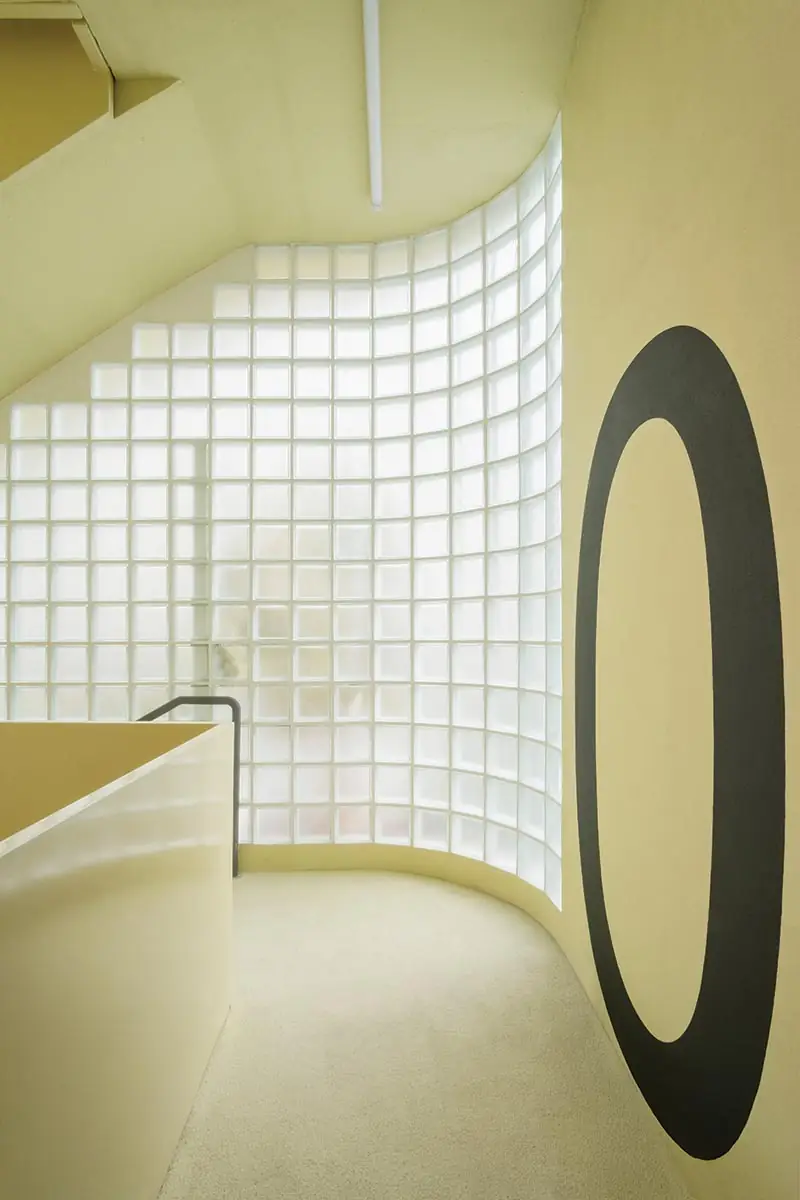
A new stair, added at the back of the building, is rendered in cheery yellow. Photo © Adriano Mura
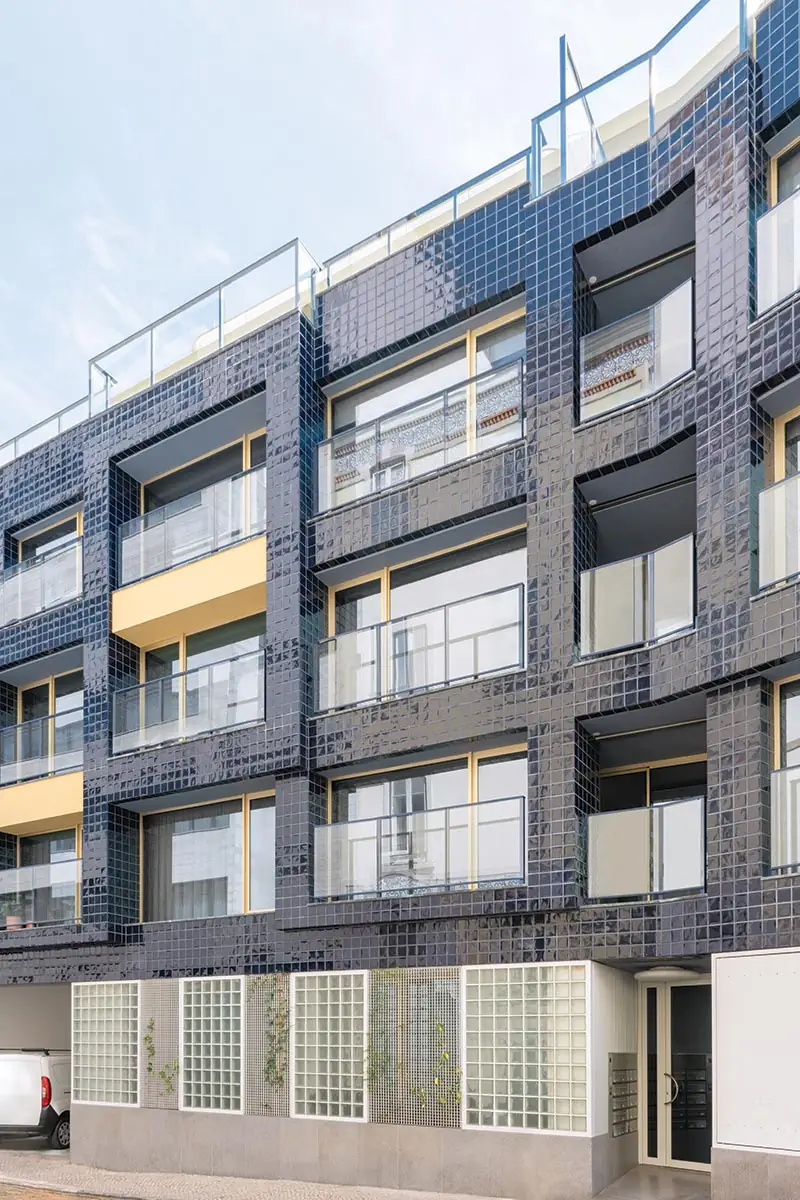
Balconies or gardens are incorporated into each unit. Photo © Adriano Mura
No one who strolls down the street and glimpses Vale Pereiro for the first time will suspect that it is a work of adaptive reuse. But this is exactly the point. The preexisting structure was retained not for its historicity but for its usefulness—and what is perhaps most intriguing is that it proved useful both pragmatically, as a means of saving money (its two floors of underground parking helped with this) and reducing environmental impact, and aesthetically. “When you’re working within an existing structure, the forms you create are almost a necessity,” says Nomos partner Lucas Camponovo. “They’re logical, but also expressive, and even glamorous.” The design of Vale Pereiro preceded the pandemic, but there’s nonetheless a lesson here for architects and developers planning to convert disused office buildings to new uses in the age of remote work.
Vale Pereiro, then, is a hybrid on several levels. Like the azulejos for which Lisbon is famous, it straddles the divides between old and new, between invention and tradition, and between the local and the global. Almost all of its apartments have now sold, but, so far, few of the buyers have been Portuguese—a reflection of the extent to which central Lisbon has, for better or worse, become the territory of tourists and expatriates. This state of affairs is “a bit sad,” Vertenten concedes, but it may help to keep in mind an observation made by the late cultural geographer Doreen Massey, who argued against what she termed “internalist and essentialist” notions of place: “places,” she wrote, “are always already hybrid.”
Click plans to enlarge
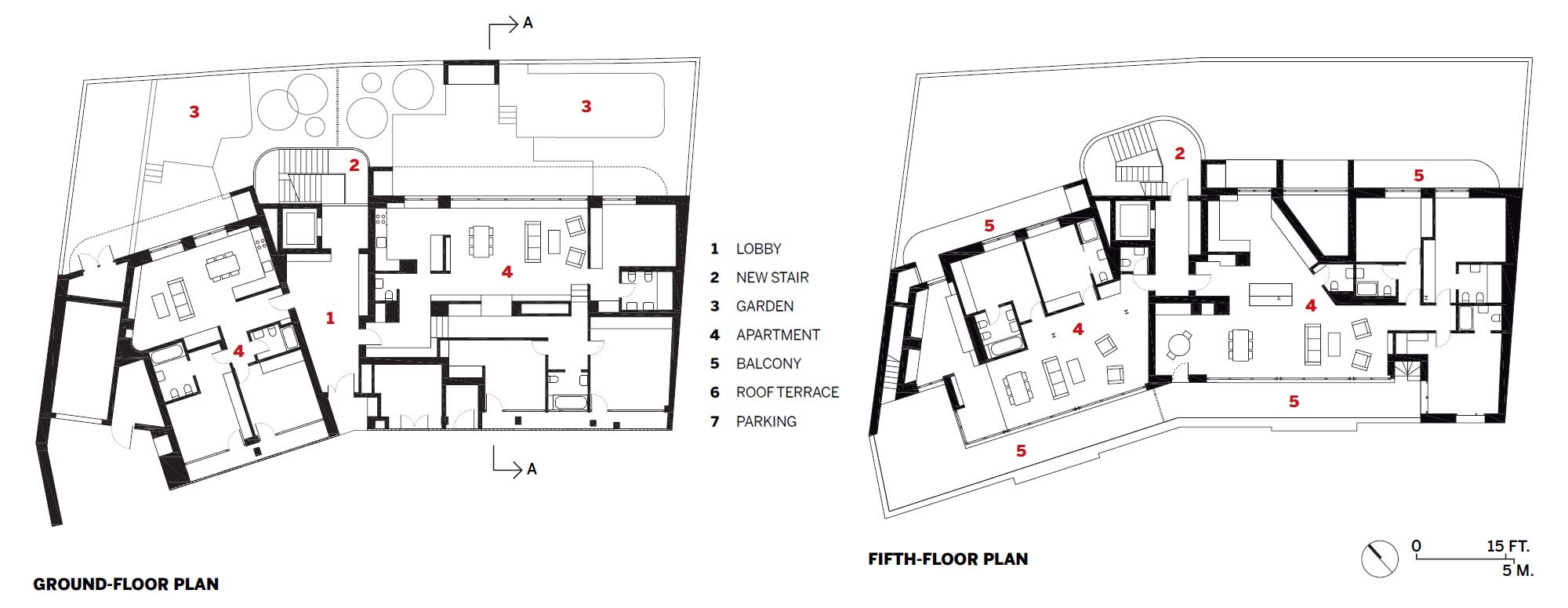
Click section to enlarge
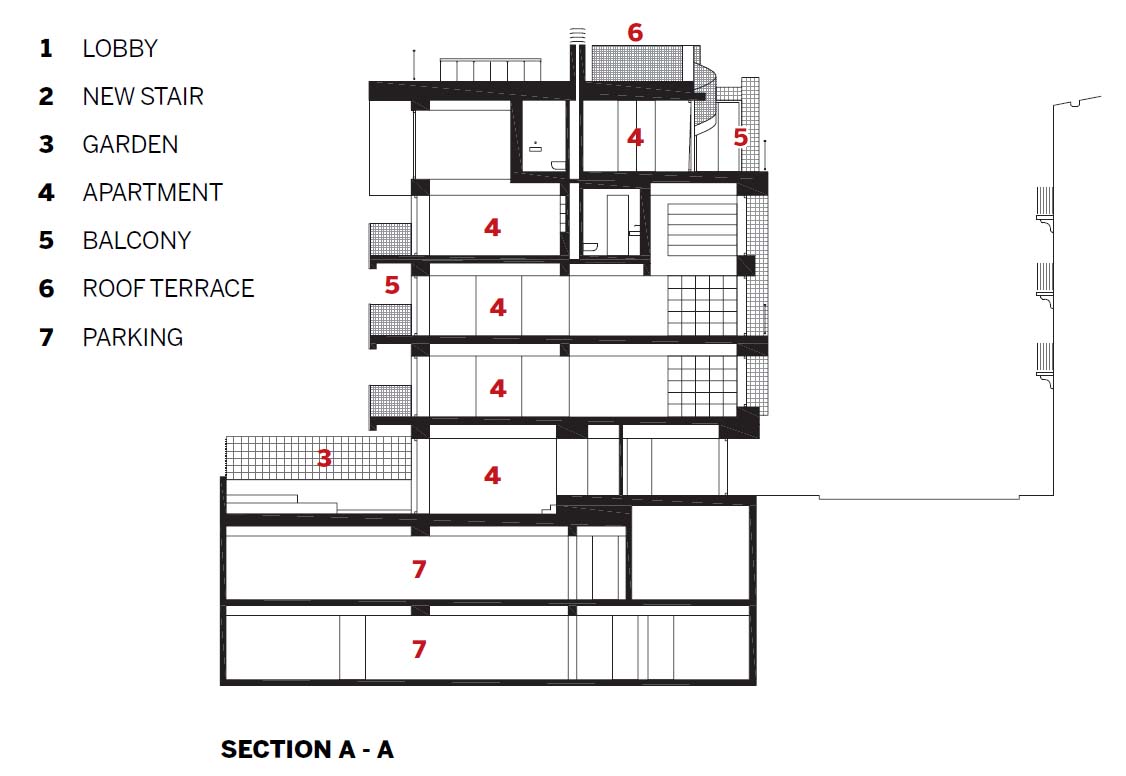
Click drawing to enlarge
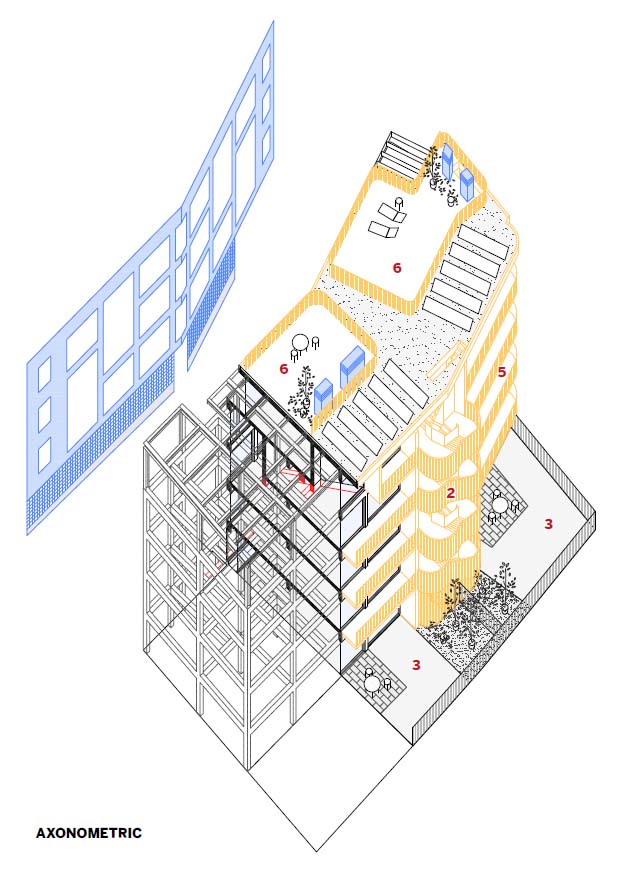
Credits
Architect:
Nomos Architects — Katrien Vertenten, Lucas Camponovo, Massimo Bianco, Ophélie Herranz, Paul Galindo, design leads; Verónica Pires, Gabriela Pratas, Jorge Paquete, architects
Engineer:
Engsol
Consultants:
Joaquim Pedro Silva Carvalho (electrical); Jorge Manuel Inácio Paixão (ventilation, insulation)
General Contractor:
Tecnorém Engenharia e Construções
Client:
Capvest Group
Size:
39,000 square feet
Cost:
$4.8 million (construction)
Completion Date:
July 2023 (occupancy)
Sources
Exterior Tile:
Aleluia Cerâmicas
Glass Block:
Seves Glassblock
Windows:
Reynaers Aluminium




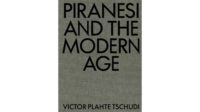
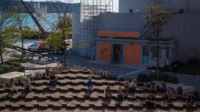
Post a comment to this article
Report Abusive Comment